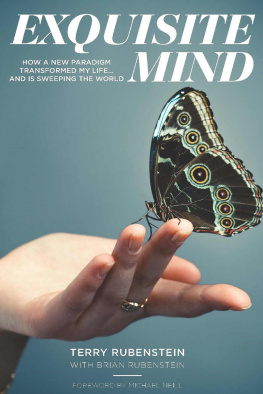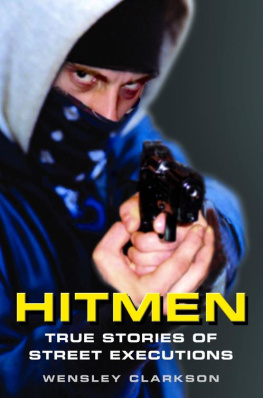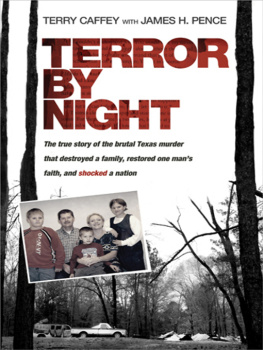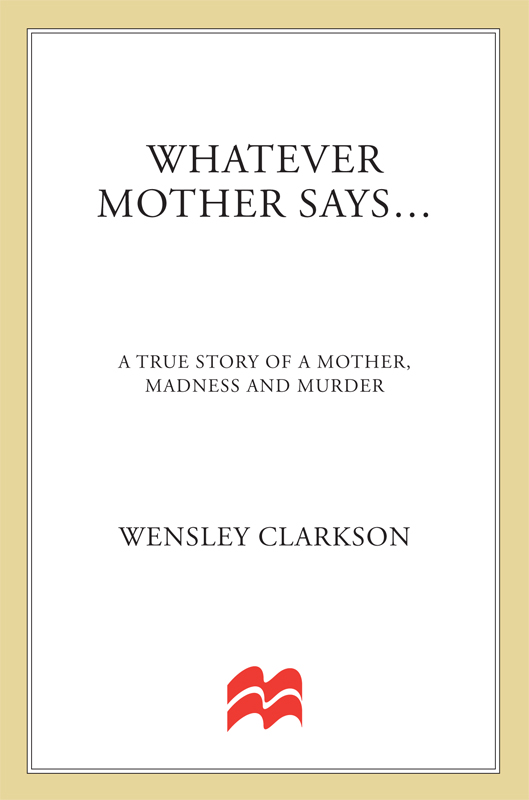Contents
Guide

The author and publisher have provided this e-book to you for your personal use only. You may not make this e-book publicly available in any way. Copyright infringement is against the law. If you believe the copy of this e-book you are reading infringes on the authors copyright, please notify the publisher at: us.macmillanusa.com/piracy.
Contents
To Clare, for putting up with me, as usual
Notes of Gratitude
The idea of using a leaden, dispassionate word like Acknowledgments for this section cannot begin to express the depth of my feelings for the many individuals who have made this book possible. I owe them my deepest and most heartfelt gratitude.
First to my agent Peter Miller and my editor Charles Spicer. Without them this book would never have happened. Their support and guidance has been very much appreciated.
Then there is: Mark Sandelson, Bud Sullivan, Keith Bendixen, Hal and Fran Cheney, Detective David Lundberg, Pat and Vere Thatcher, Peter Rosen, Ann Cristoferson, Heidi Sorenson, Inspector Johnnie Smith, DeLois Knorr, Robert Knorr Sr., Mickey Sampson, John Trumbo, Sheriff Donald J. Nunes, L.A. Times contributor James G. Wright, and Sean Martin.
But my biggest debt of gratitude must go to Sgt. John Fitzgeraldwithout his help this book would never have been possible.
Authors Note
The central figure in this story, Theresa Jimmie Knorr, changed her name frequently. In an effort to avoid confusion, throughout the book she is referred to by whichever name she was using at the time.
Quotations from written material appears, with few exceptions, without the editorial [sic]. When it seems that a word was inadvertently missing, it has been added for the sake of clarity. Mistakes in punctuation, grammar, and spelling have been corrected in certain instances, but in others it was felt that retaining an error helped convey the flavor of a document and the style of the person being quoted.
Introduction
As an author and former crime reporter, I have written about many of the most notorious criminals of modern times, from the appalling killings committed by Charles Manson and his flock of disciples to the ultimate crime of passion that made Betty Broderick one of the most infamous murderesses of modern times.
However, I will never forget my response as a parent when I first became aware of the murders allegedly committed by the mother and her two sons featured in this book. How could a mother kill her own flesh and blood? Even worse, how could a woman defy that special bond that is supposed to exist between mother and daughter?
But then mother love can take many forms: hatred, derision, sympathy, inspiration, devotion, self-sacrifice, companionship, destruction, jealousy, admiration, affection, desolation, and, it now seems, even murder.
Mother love is supposed to mean love of a mother for her children. It is a two-way process, which means that the child gradually rises until she is in the ascendentthe succorer, not the succored. Your mother is your mother for always. Your one and only mother. Your mother for all time. You cannot divorce your mother, and if you happen to be her daughter, you are the same sex as her, out of the same mold. It is like a series of those Russian wooden dolls, the sort that fit inside each other, painted with different floral dresses, but shaped the same and becoming smaller and smaller.
Men may rule the genealogical tree, but it is the female side of the family that has a truer inheritance. When a woman has a baby, it is her mother, not her father, she turns to, and if that baby is a girl, in due time she will turn to her mother. That is a real family tree. The family tree of women.
It may be significant that the mother described in this book lost her own mother at a young age. She had no one to turn to at the start of parenthood. No one to guide her. No one to tell her how to do it.
As I began to investigate the circumstances behind the alleged crimes featured in this book, I uncovered such a vast nest egg of hidden abuse that one cannot help asking the question over and over again: Why? The blatant violence committed in the name of the family cannot all have been a thoughtless act. What hidden factors contributed to this tragedy? Why did authorities ignore the pleas of help by one sister and force her back into that house of horrors, and in effect sentence her to death? Why did so many not believe the only surviving daughter when she told authorities what had happened inside that household?
I make no specific stance in presenting the facts in this book as they have been revealed to me through painstaking research and extraordinary access to tape-recorded statements made to investigators during the course of their inquiries, as well as dozens of interviews. I have simply recalled them as they have been recounted by everyone involved.
The actual date of the trial of Theresa Jimmie Knorr and her sons has yet to be confirmed. In the interests of justice, I have been careful not to veer away from the story as it unfolded, according to the many family members, friends, and officials involved.
But if ever a case deserved to be publicized, even in advance of a court case, then this is it. The very fabric of the American family unit is already under enough severe pressure. The story of the Knorrs is a warning of just how bad things can get and why all of us, as responsible adults, have a duty to our children to do something to arrest the decline before it is too late.
It is hardly as if the warnings have not been made in the past. So-called experts have been telling us for years of childhood abuse and its terrifying aftermath.
The battered child syndrome has been described as unrecognized trauma by radiologists, orthopedists, pediatricians, and social workers. It is a significant cause of childhood disability and death.
Unfortunately, it is frequently not recognized, or, if diagnosed, is inadequately handled by physicians because of hesitation to bring the case to the proper authorities.
Yet, incredibly, not so long ago in Western society, unbridled parental domination was an enduring tradition whose roots were seen in the Old Testament.
Later generations took this biblical command quite literally. Under the Old English common law, children were regarded as the property of their fathers. Parents could require their children to work for them, or place them in indentured servitude in return for payment. Absolute obedience was not an issuefor children who attempted to rebel were whipped and beaten or placed in workhouses.
The harsh treatment of children went hand in hand with prevailing moral and religious beliefs that childhood was an inherently evil state. This tradition carried over to our own shores where, in 1646 in the Massachusetts Bay Colony, newly arrived citizens (ironically, escaping repression) enacted the Massachusetts Stubborn Child Law. Parents who claimed that their children were stubborn and rebellious and disobedient of voice could seek one of several state reprimands, including execution. Obviously, democracy and due process were not things the Pilgrims wanted in their homes.
Children universally attach themselves to their care givers. This is a survival mechanism necessary to provide the needs that a child is unable to satisfy alone. Certainty of the presence of a safe base allows for normal emotional and cognitive development. In the absence of such a safe base, as in cases of child abuse and neglect, a child goes through a variety of psychological maneuvers to preserve maximum protection. Abused and neglected children often become fearfully and hungrily attached to their care givers, with timid obedience and an apparent preoccupation with the anticipation and prevention of abandonment.


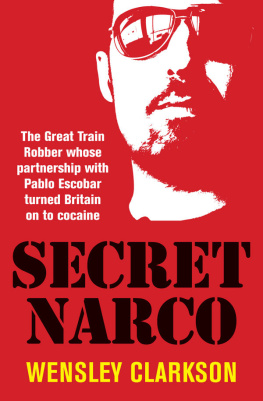
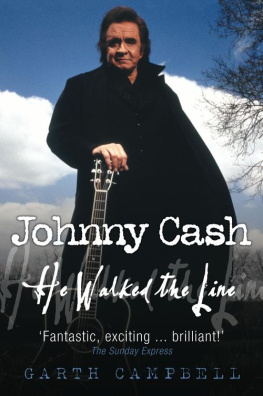
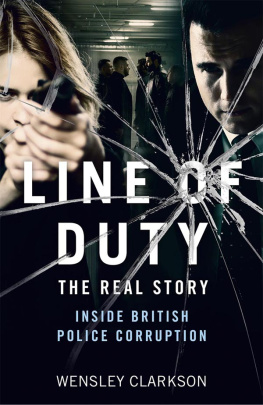
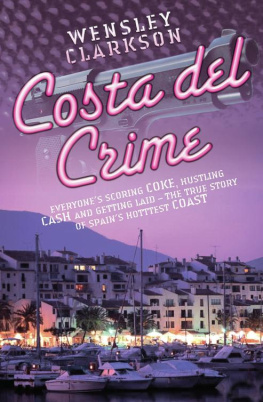
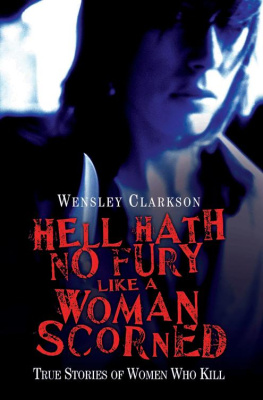
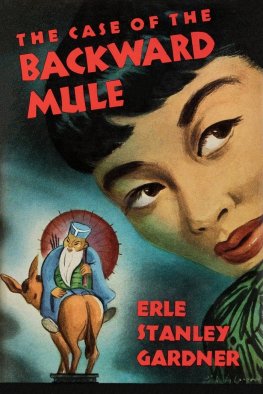

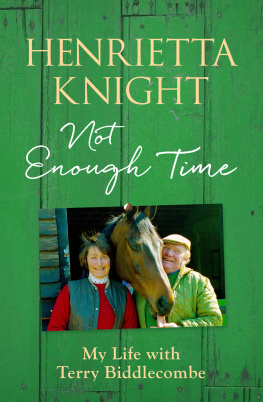
![McDougal - Mothers day: [the shocking true story of a mother who murdered her two daughters with the help of her own sons]](/uploads/posts/book/189824/thumbs/mcdougal-mother-s-day-the-shocking-true-story.jpg)
